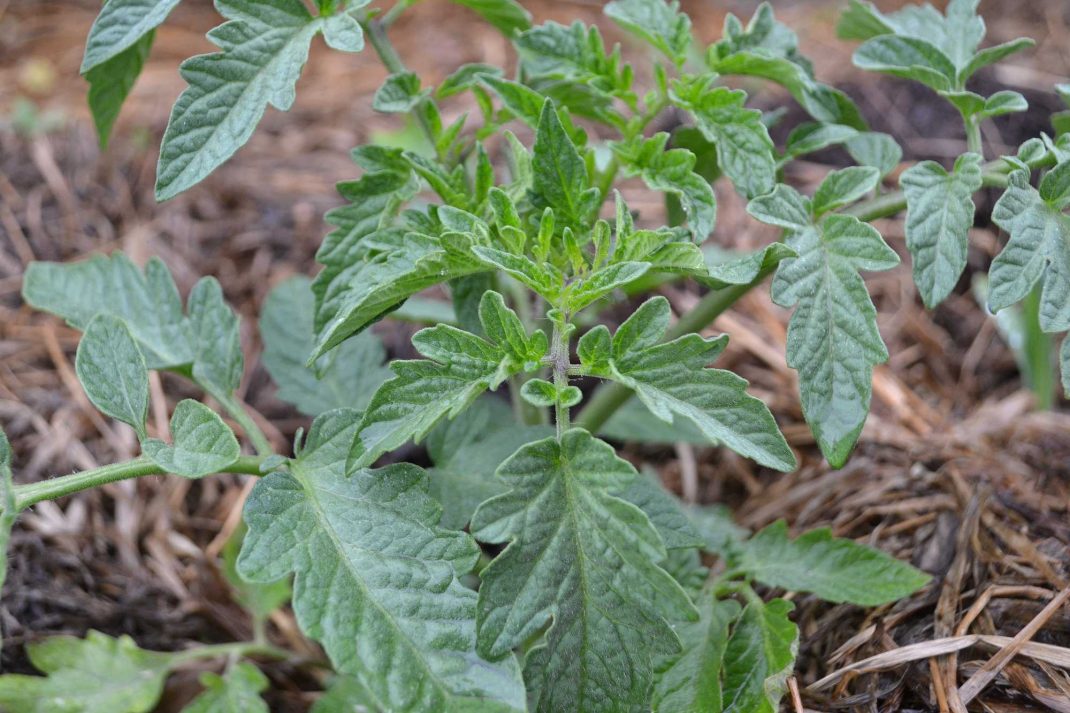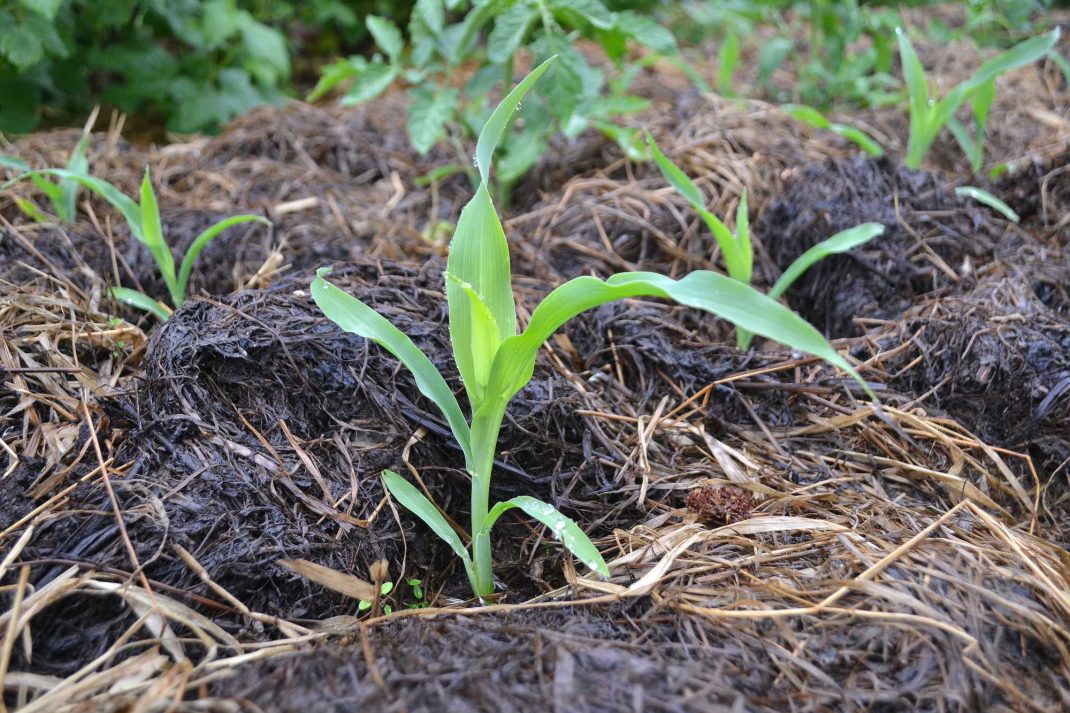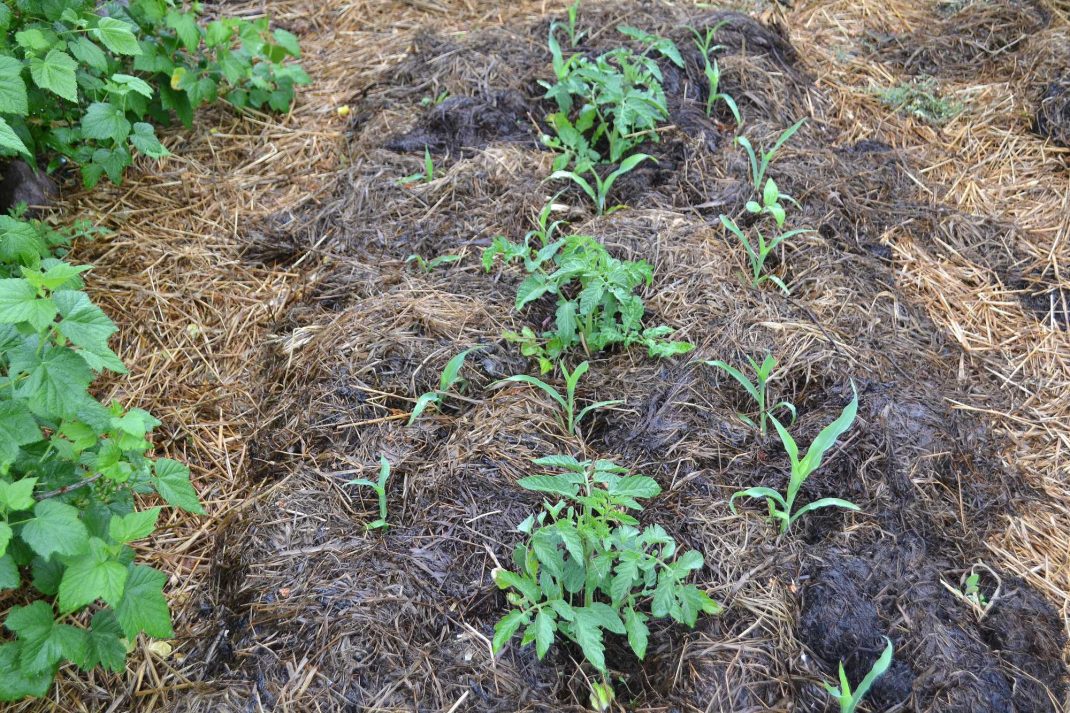Companion planting corn and tomatoes
Can you grow corn and tomatoes together? Of course! I companion plant corn and tomatoes in my kitchen garden with great results.

I planted the tomatoes a few weeks before the corn since they were full-grown already in the middle of May. The temperature outside was ok by then too.
Companion planting can be a bit tricky. Some seem to think that corn and tomatoes are a good combination, and others disagree. This is my third attempt companion planting corn and tomatoes. Since I generally get a smaller harvest of tomatoes when I grow them outside, I haven't really experienced that this combination might not be optimal.
Read more: Get the smart garden tool belt SARA here!
Simple preparations
This year, I have an entire quarter of tomatoes and corn in my garden. Four whole beds. The beds are 10 feet (around 3 meters) long and 3 feet (around 1 meter) wide. I covered the beds with grass clippings I stored from last year and a layer of silage. Corn and tomatoes need a lot of nutrients and a constant amount of moist in the soil. Mulching is the perfect way to cover both of these bases.
Planting
I put four Crimson Crush tomato plants in each bed. This variety is said to be resistant to potato blight. I planted the tomatoes a few weeks before the corn, simply because I thought they were the right size. The soil in the beds is so nice and airy after many years of mulching. I can basically use my hands to dig little holes for the plants. I watered the tomatoes just once after planting them, and they have been growing really nicely despite the dry weather.
Read more about tomatoes: Tomatoes from sowing to harvest

I pre-sowed the corn in a plug tray around three weeks before planting the corn and tomatoes together.
At the end of May, I planted corn in three of my beds. Around 30 plants in each one. I pre-sowed them in troughs before planting them.
I planted three plants width-wise and ten plants lengthwise. I planted them eight inches (around 20 centimeters) apart. The same distance between both the plants and the rows. Corn should be planted in clusters instead of long rows. If you put them in long rows, the pollination might not work and you get a corn cob with very few corn kernels. I left a little empty space by the tomato plants so that I can harvest my tomatoes.
The corn looks so nice! This is what you get when you plant chubby little corn plants, instead of the tall and gangly ones you often get if you leave the plants in their troughs too long. The corn plants adapt to their new environment quite quickly and they just love the nice warm soil underneath the mulch.
Pruning
If you are used to grow corn and tomatoes, then you know that these vegetables can grow quite tall and voluminous. In order for this companion project to work, I need to prune the plants a little bit so that they all fit and have access to sunlight. It's really not that hard. I always prune my corn and tomatoes during the season.
For example, I remove the tomato suckers and the lower leaves. If there are fewer leaves on the plant, the tomato will instead start to conserve energy to ripen its fruits. Fewer leaves also mean that the risk of potato blight gets smaller.
I add more mulch before the plants grow so large that it's difficult to get to the soil underneath. I mostly use grass clippings. Since I already have a thick layer of mulch, I'm not going to water the beds again. I'm counting on that my plants will be just fine with the rain we get here naturally.

One of four beds with companion planted corn and tomatoes.
So, that's how I did this year's companion planting. I can't wait to see the results! Especially since I decided to go for the hardy Crimson Crush variety. I haven't tried it before.
On the subject of companion planting, I remember a funny comment I got in 2012:
I don't think you should take the companion planting so far that you start mixing individual plants. It will be very difficult to work with, especially the crop rotation.
I truly hope that the person who commented this changed their point of view and tries companion planting in all ways possible. Doing this will give you a garden teeming with life, and your growing spaces will be more well-planned too. Try it!
/Sara Bäckmo



Leave a Reply
You must be logged in to post a comment.